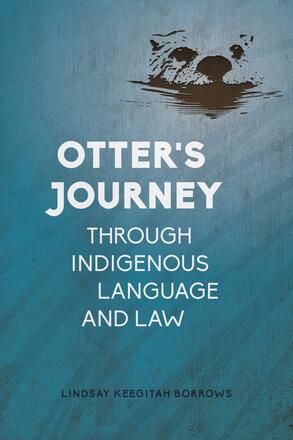
Told in contemporary Anishinaabe storytelling style, Otter’s Journey takes us across the globe to explore how the work in Indigenous language revitalization can inform the emerging field of Indigenous legal revitalization.
Description
Storytelling has the capacity to address feelings and demonstrate themes – to illuminate beyond argument and theoretical exposition. In Otter’s Journey, Borrows makes use of the Anishinaabe tradition of storytelling to explore how the work in Indigenous language revitalization can inform the emerging field of Indigenous legal revitalization. She follows Otter, a dodem (clan) relation from the Chippewas of Nawash First Nation, on a journey across Anishinaabe, Inuit, Māori, Coast Salish, and Abenaki territories, through a narrative of Indigenous resurgence. In doing so, she reveals that the processes, philosophies, and practices flowing from Indigenous languages and laws can emerge from under the layers of colonial laws, policies, and languages to become guiding principles in people’s contemporary lives.
Awards
- Short-listed, Indigenous Literature Award, Southern Ontario Library Service 2019
Reviews
[T]he evocative language which Borrows offers in her telling of the creation story in her introduction, in her enmeshing of the realities of language revitalization in Canada and New Zealand in Chapter Three, and especially, I find, in her experiences in the Salish Sea in Chapter Five, talking with Raven, serves to make real for me as a reader the power of the stories as conduits to ecologically, linguistically, and legally precise truths.
- Jasmine Spencer, postdoctoral fellow in linguistics, University of Victoria